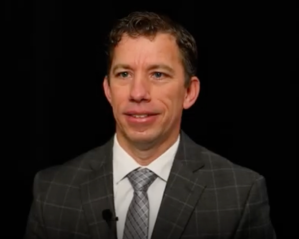The Peace Corps has completed the first of three pilots that will dramatically change the way it provides technology infrastructure to its posts around the world, almost all of which are in economically challenged areas.
In an interview with FedScoop, agency Chief Information Officer Dorine Andrews said she is implementing the GRID Project — Global Reinvention Infrastructure Deployment — which will refresh the technology at more than 70 posts around the world over time.
“Before, we would send the posts the parts needed for their technology infrastructure and have two of our headquarters IT specialists go and assemble it,” Andrews said, “but with GRID, we send an assembled infrastructure that is simply maneuvered into position by the post IT specialist and then remotely, the headquarters IT specialists in the United States transfer and test the applications and data on the new infrastructure.”
Andrews said the Peace Corps builds the infrastructure in the U.S. with all the necessary technologies such as storage, virtual servers, applications, security and power. The agency also installs the infrastructure software and then ships it to the designated post.
The post IT specialist then connects it to the old system and the Peace Corps is able to remotely transfer all of the necessary data back in the U.S. to the new system. The Peace Corps can even test it remotely.
“This will save us a tremendous amount of travel money, along with providing each of our posts with the same level of technological capability,” Andrews said.
The Peace Corps has two more pilots lined up for the coming months, and Andrews expects the agency can start pushing out the program to South America later this year and then the rest of the world.
“It’s a whole new way of doing business for us by better using our IT skills and people,” Andrews said, adding these technology refreshes are built into the Peace Corps’ base IT budget, so it will not have to submit annual requests – a huge time saver for her 75-person staff and the CFO’s office.
Andrews also said the Peace Corps is working on the redevelopment of its volunteer reporting tool. The tool enables volunteers to file the results of their community work to posts and to HQ. The various reports generated from the data are given to the agency’s strategic partners and Congress and provide a full picture of what the volunteers accomplish each year of their service.
“Our work in moving to cross-organizational agencywide systems like the volunteer reporting tool is really about modernization,” Andrews said. “This is only one system we are working on. We are focusing on business processes that touch many offices.”
Along with those projects, Andrews said the Peace Corps is looking for a fundamental shift in its architecture and is using SharePoint and Dynamics CRM to build a number of knowledge based and relationship management solutions.
Her goal is in two to three years to have an integrated database of all volunteer and post information, aimed at helping better understand the relationships the Peace Corps has around the world. She said two major systems will be developed on this platform along with 45 to 50 smaller projects as well that – from an architecture standpoint – will allow the Peace Corps to better manage its information assets, workflows and relationships in a much more streamlined fashion.
On the social media front, Andrews is working with the agency’s Office of Communications in an increased effort to reach out to volunteers. “We’re doing a strategic thrust to engage more with both our volunteers and the people thinking of volunteering,” she said.




